How to (almost) make 300 in the IPL
Is it really too much to ask for one of these teams to make 300? And then for another one to chase it?

This post is brought to you by Cricket8. We’ll be writing there throughout the IPL. Plus there are podcasts and live watchalongs.
Stats by Varun Alvakonda (As of 15th April, unless specified otherwise)
I know you want to talk about the batting, I get it. All the runs, all the sixes, all the madness. And I will try to explain it all, but first, allow me to talk about a part-timer offspinner.
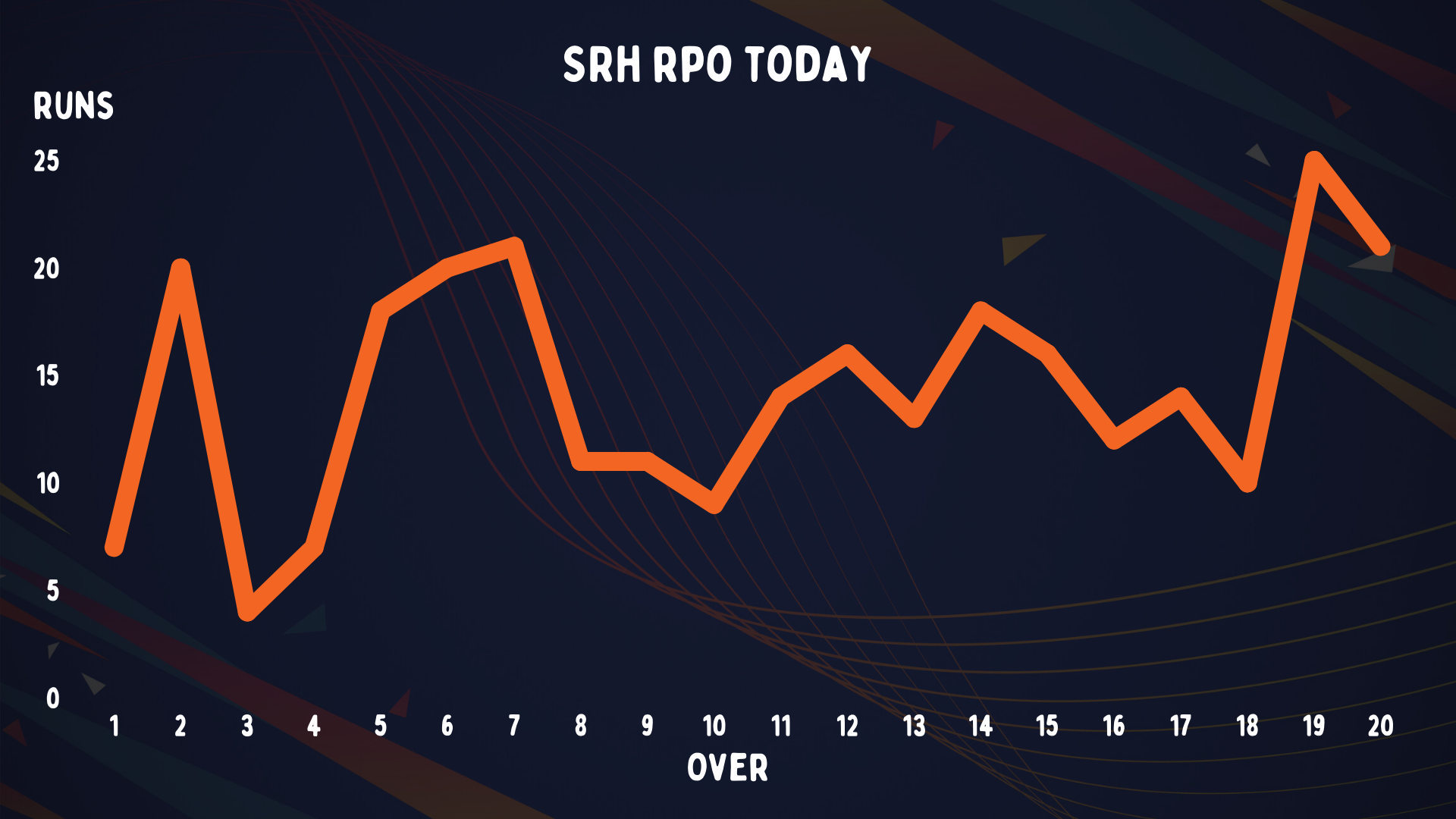
Will Jacks was not even in the Royal Challengers Bangalore XI at the start of IPL 2024. He is basically a very similar player to Glenn Maxwell — a top four batter who smacks the ball out of the park and bowls offspin.
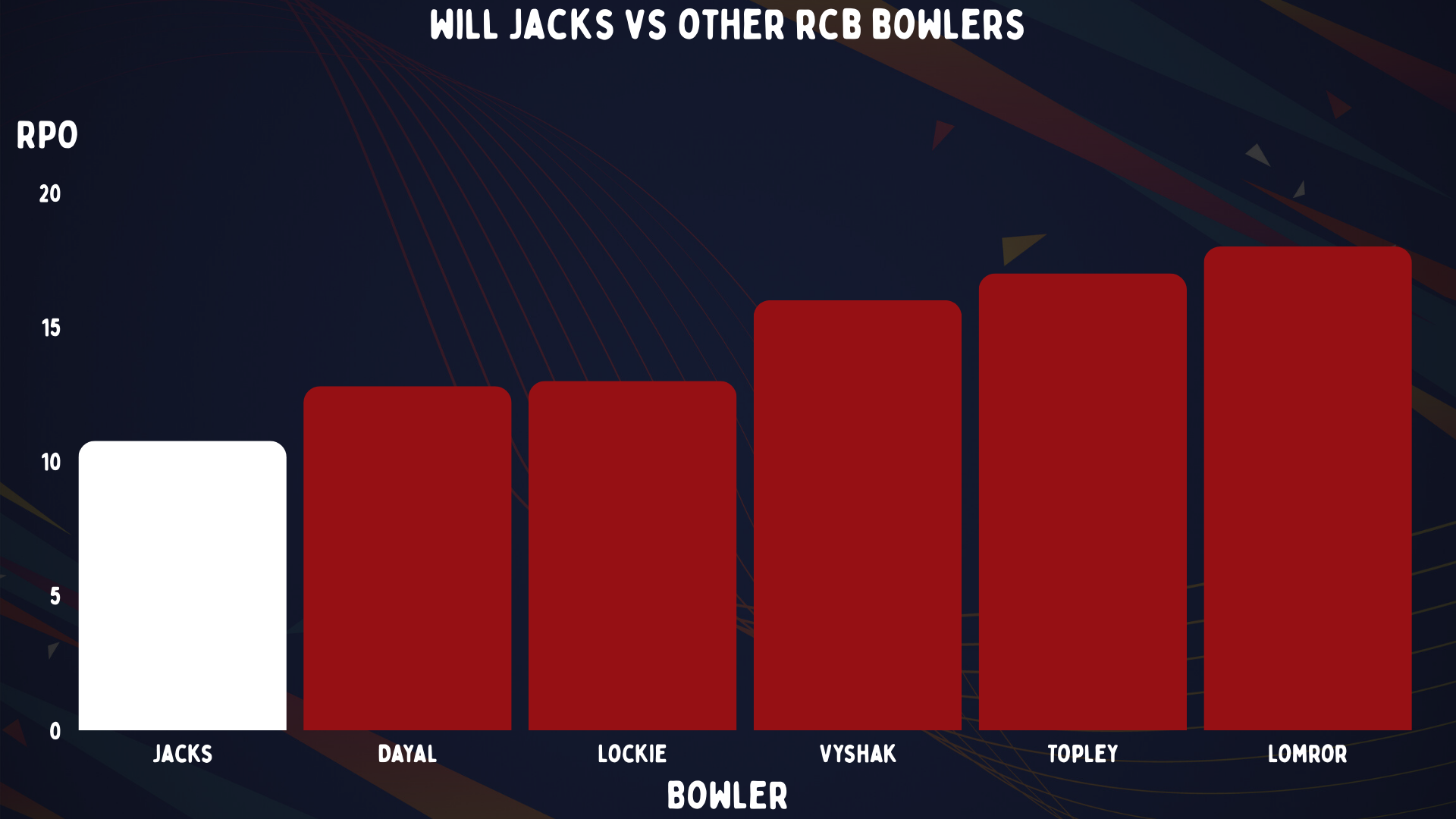
Jacks averages less than an over a game. He is no one’s idea of a frontline bowler. This is the cheeky over you try and steal.
Yet here he is in a must-win match, opening the bowling. That is quite the wild ride. He was up at the top to stop the intent brothers — Abhishek Sharma and Travis Head — from destroying everything. And it worked. Look at his first over and his second one. They scored very little.
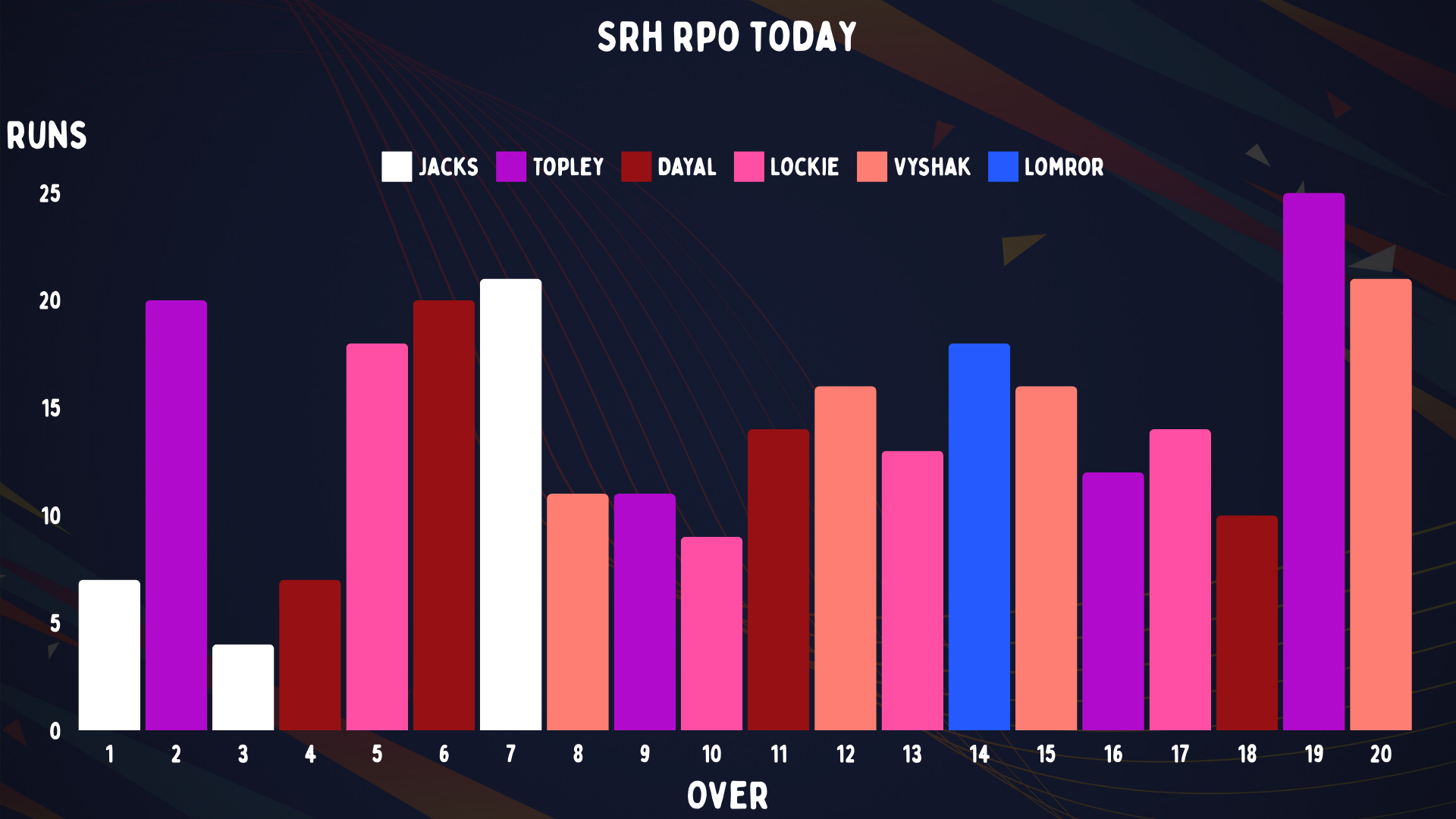
Let me take this further. Is it possible that this over actually stopped RCB being the first IPL team to allow 300 runs? However, there are other issues here, too. The use of this first over of match-up offspin against the Orange Southpaw crushers meant that Reece Topley didn’t bowl the first over.
To me, this seemed like madness. The only bowler in RCB’s entire line up you can trust right now is Topley. He is a left-arm swing bowler who needs the new ball. And while your offspinner might slow down the batters, Topley is swinging it away from them and is the most likely to get them out. In fact, he is twice as likely to get a left-hand batter out. And there were two of them there.
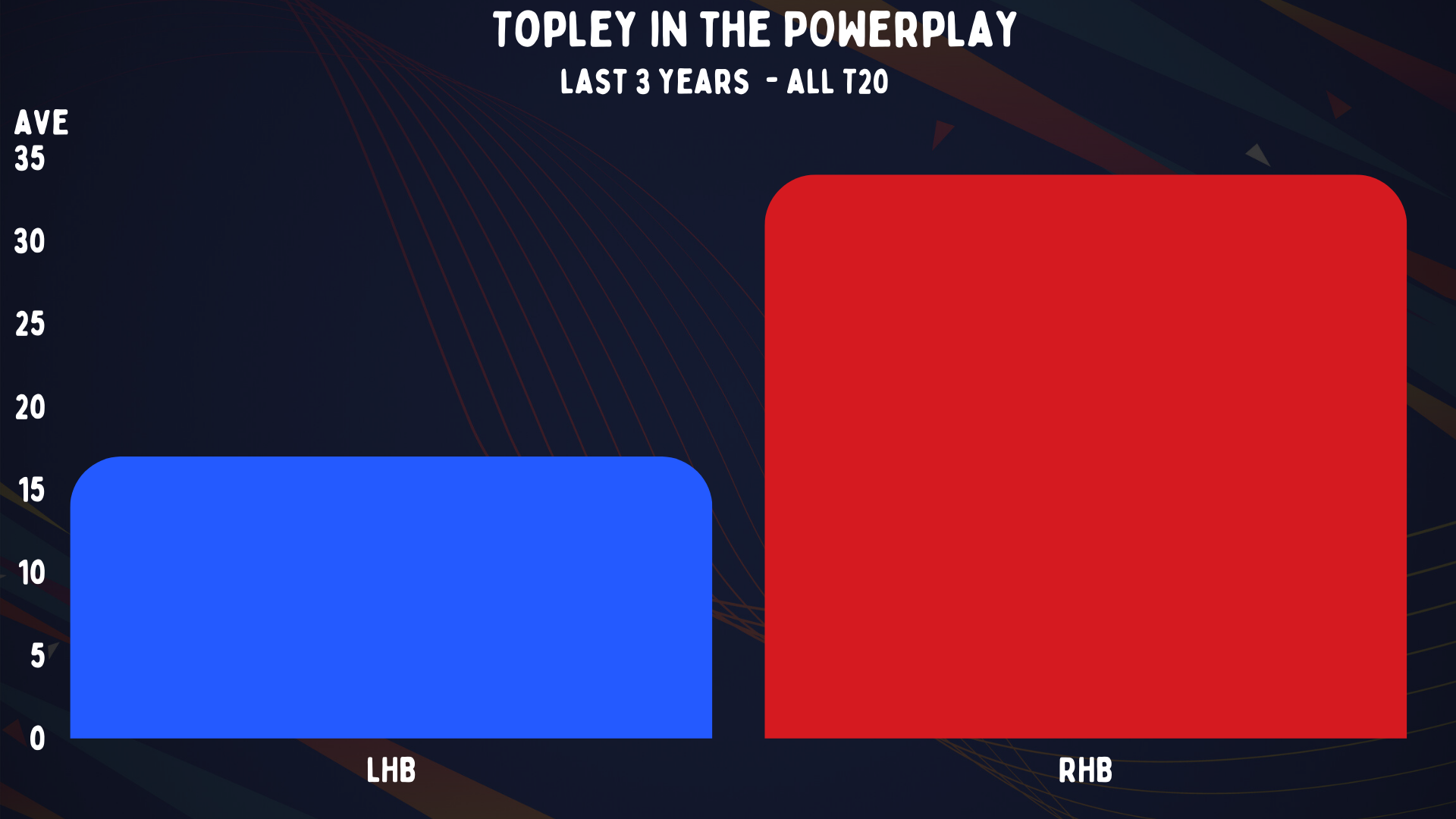
But get this. Despite being a swing bowler, Topley is actually better in the second over than the first when it comes to average. That is not at all what I would expect. RCB have been using him for overs one and three more, but he prefers overs two and four unlike most swing bowlers.
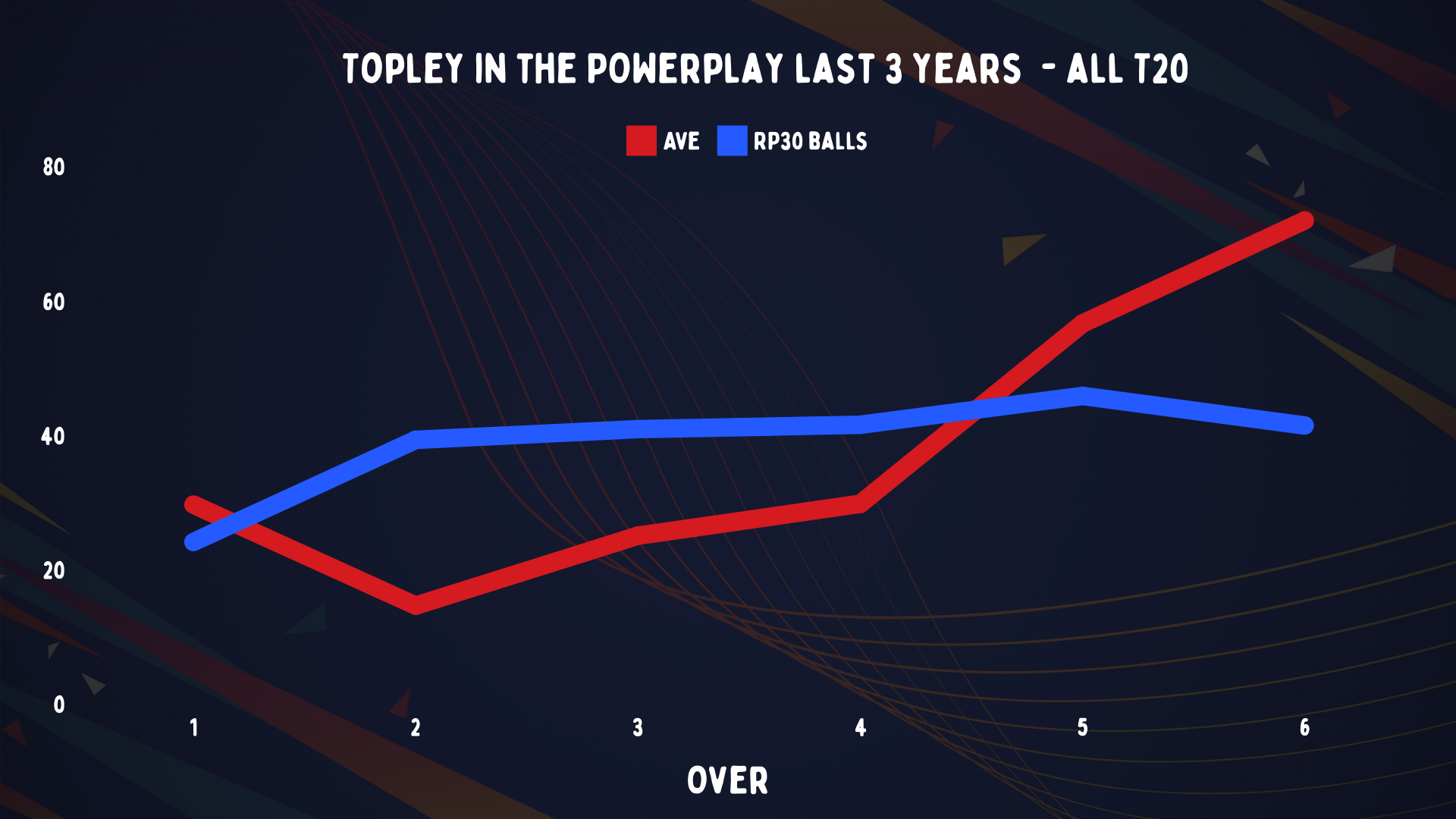
So RCB did this perfectly. They got the cheap first over from Jacks, and then attacked with their best bowler in the period he is absolutely suited to taking wickets, against the type of batter he loves to dismiss.
And… Topley got hammered. So much so that they didn’t feel like they could bowl him again. This meant that with the ball still moving around, they went to Yash Dayal after another good over from Jacks. He also got it right, but sadly didn’t take a wicket.
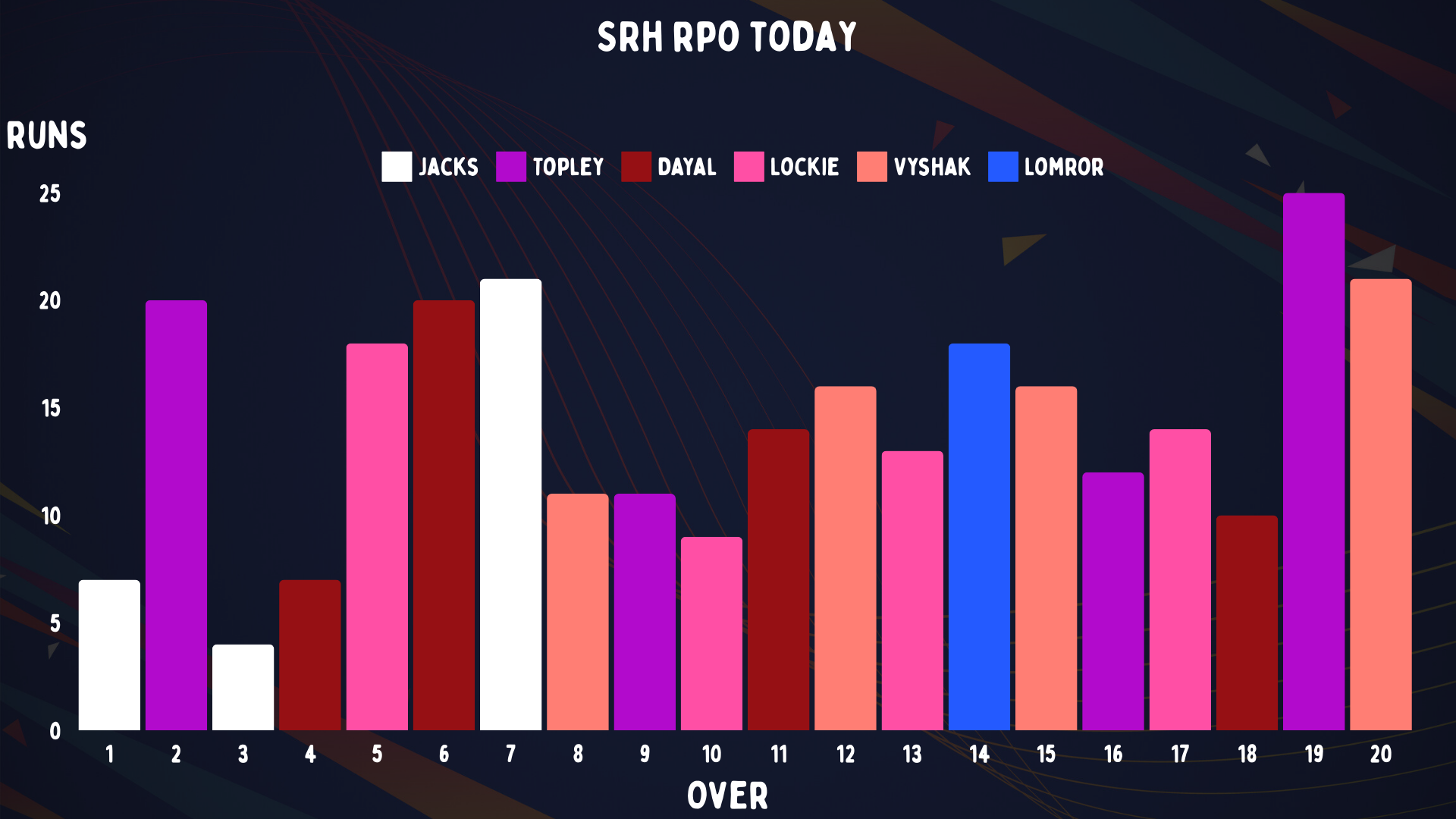
Getting a wicket was the main objective, because you cannot slow down the Orange Southpaw crushers without that. From here on, not even Jacks or Dayal could do anything.
The rest was carnage. If you like seeing people clubbing things, you saw plenty of that. It was brutal hitting that seemed destined for 300, but only (ONLY) making it to 287. Only. Only. 287.

If you think you are seeing more runs each year in T20 cricket, you might be confused by this graph that shows since the year 2011, we have added 1.1 runs per over (a 14% increase). When Kookaburra reinforced the white balls, you can see scores dipped. But since the top order players worked that out, there has been a rise again. So far, this year and the last year are about the same.
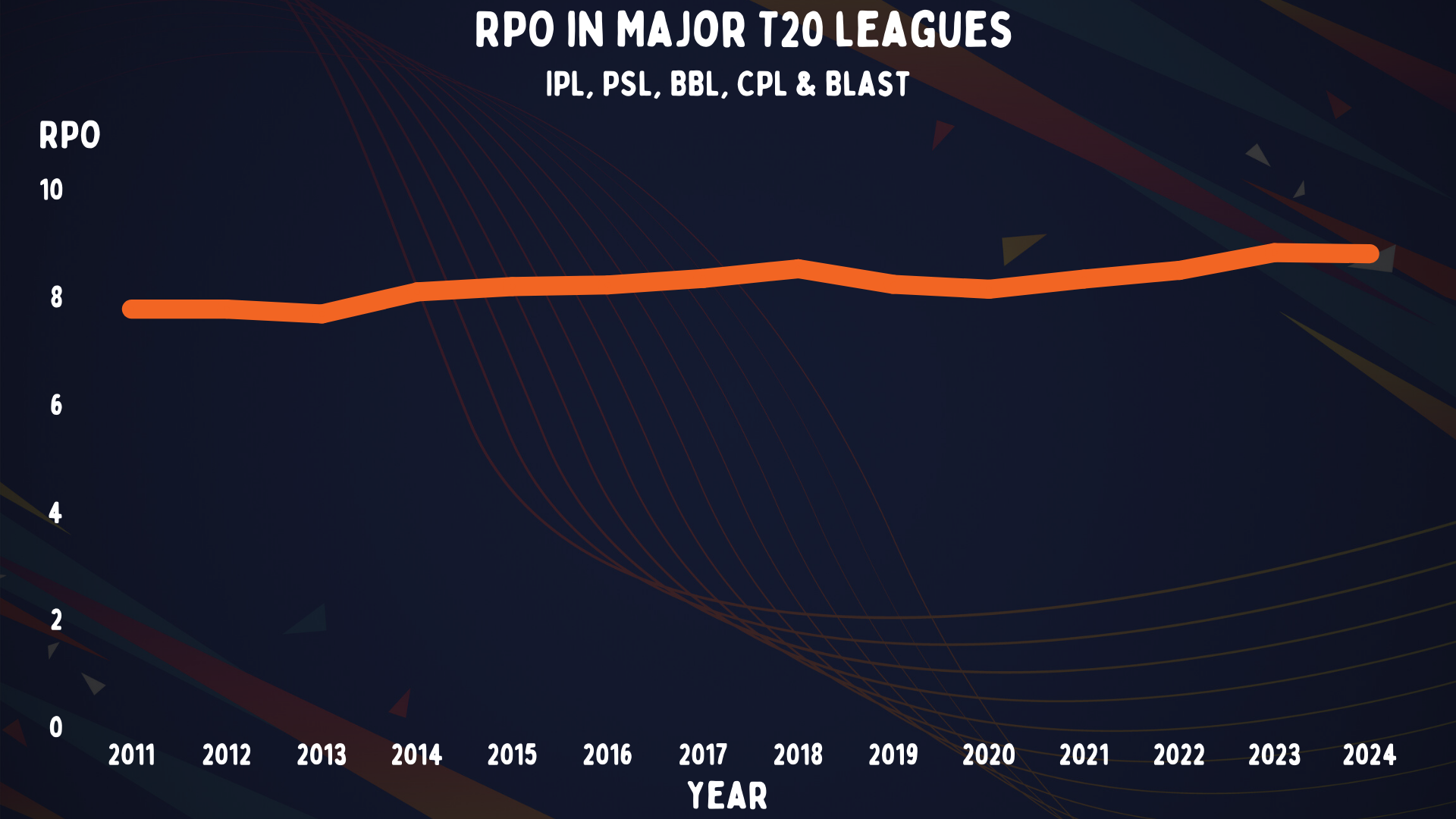
But the IPL, while having a similar pattern, certainly has more of a kick at the end. Since the Impact Sub (and two bouncer rule) has come in, we’ve seen a lot more runs in the IPL. It has been supercharged.
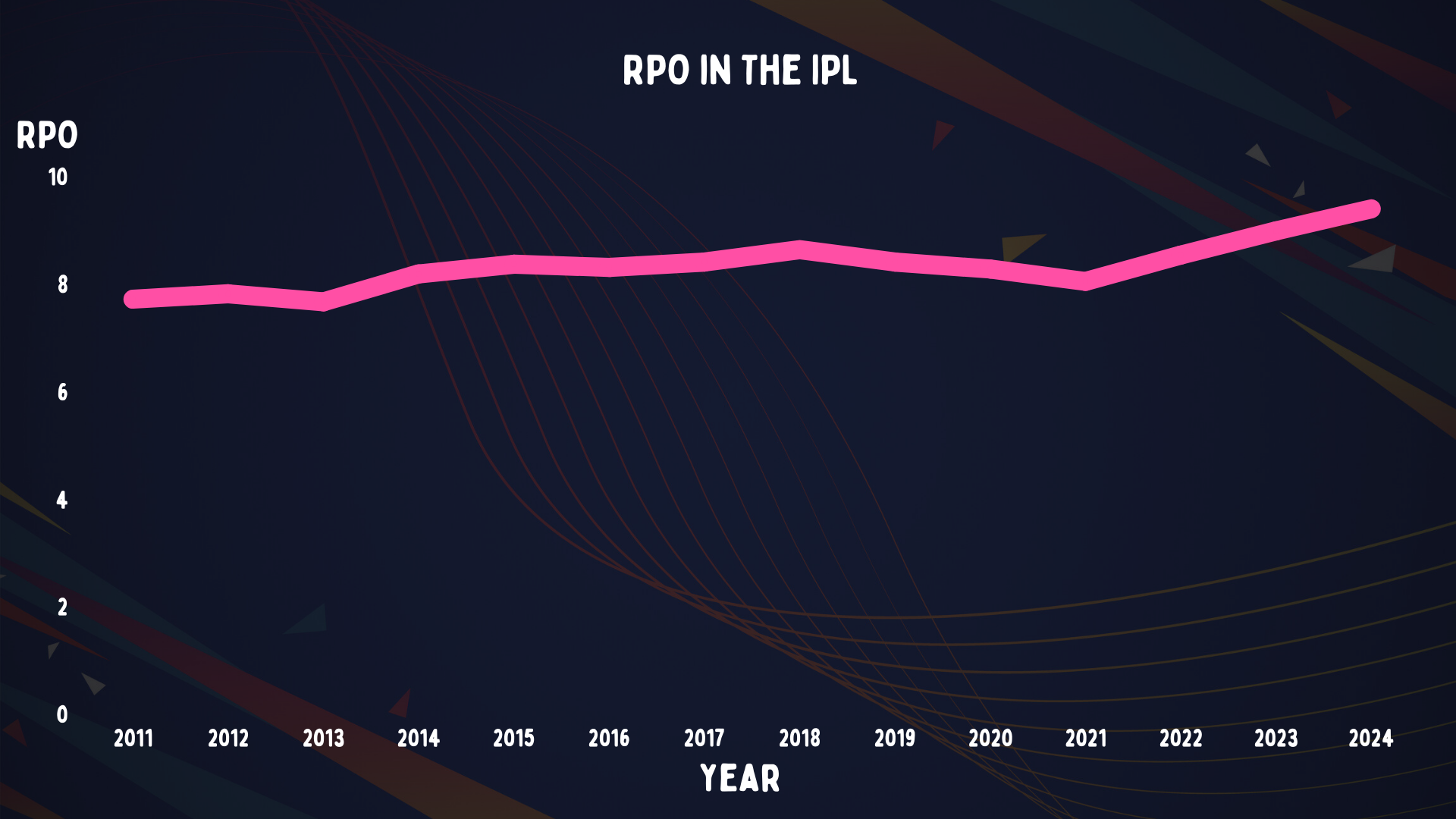
The current RPO for this season is 9.4, which is basically a run higher than the other major leagues. This might drop off as the wickets get older. But if you think you are seeing more runs, you are in fact seeing more runs
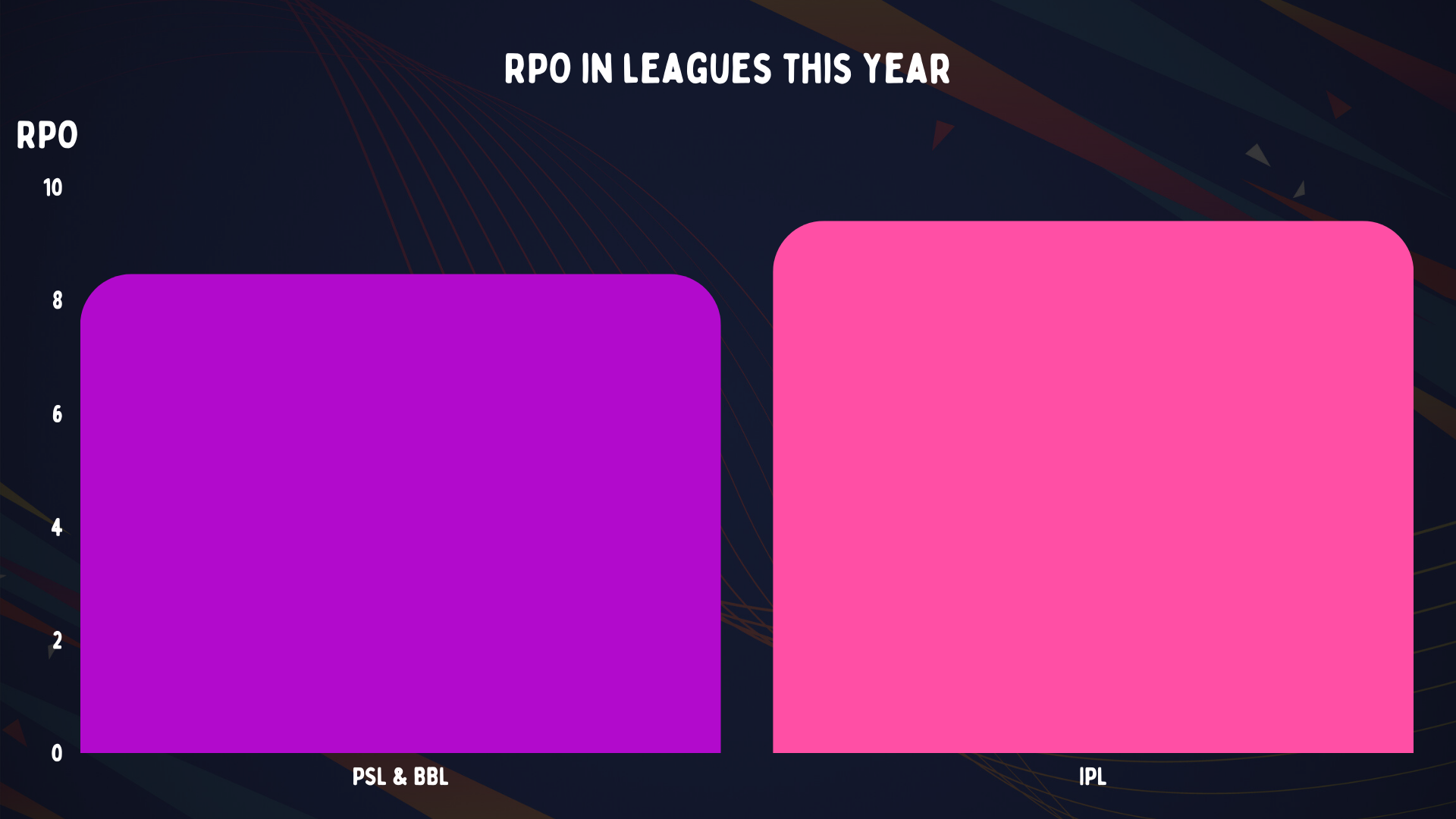
But someone still has to score them. And a big slice of these runs came from the top two guys, so let us start there.
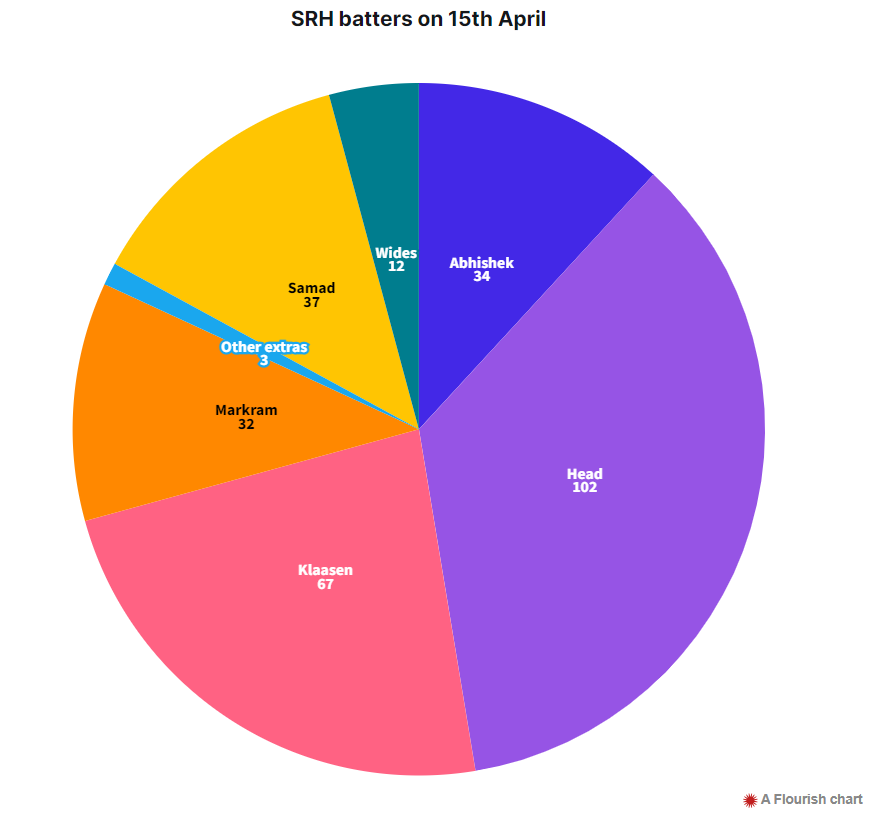
This is the true strike rate, after ten balls of a batter’s innings this year in the IPL. You can see that Travis Head has five runs more than a normal batter, and you can say, wow, that is pretty good. But look at the first player on this list. Abhishek Sharma has ten more runs than a normal IPL player after ten balls. I have not seen anyone start innings like this since peak Luke Ronchi.
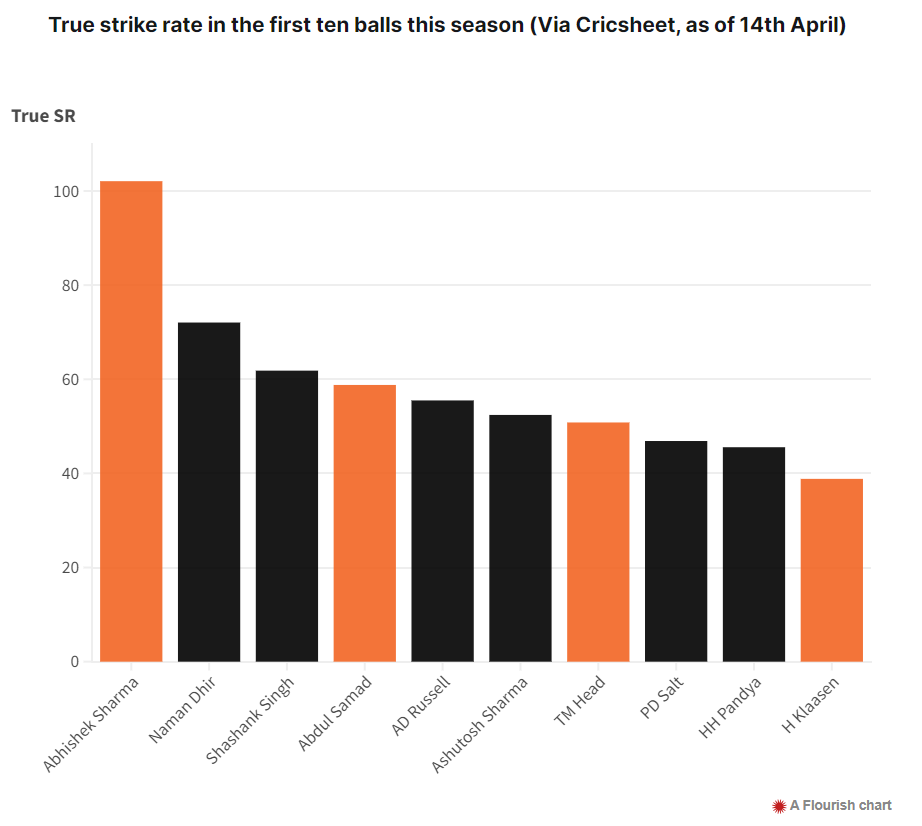
What this allows is for Head to actually get himself set. Clearly, over the course of an innings he is the bigger threat, but having him with a guy who can do this means he can attack when he wants, not from ball one.
Look at what these two have accomplished together in the Powerplay. Abhishek is just above par on true average, which is more than fine, but considering he is scoring 0.6 runs a ball quicker than normal is extraordinary.
But look at Head, he is also being stupid up here. He’s averaging 80% better than others up front, and still in that second non-Abhishek tier of speed.
And look at the guy who started opening the batting, Mayank Agarwal. An anchor who lost his form. He is the worst of the players on this list by a distance. Sometimes you make a change out of necessity, and it works better than your greatest plans.
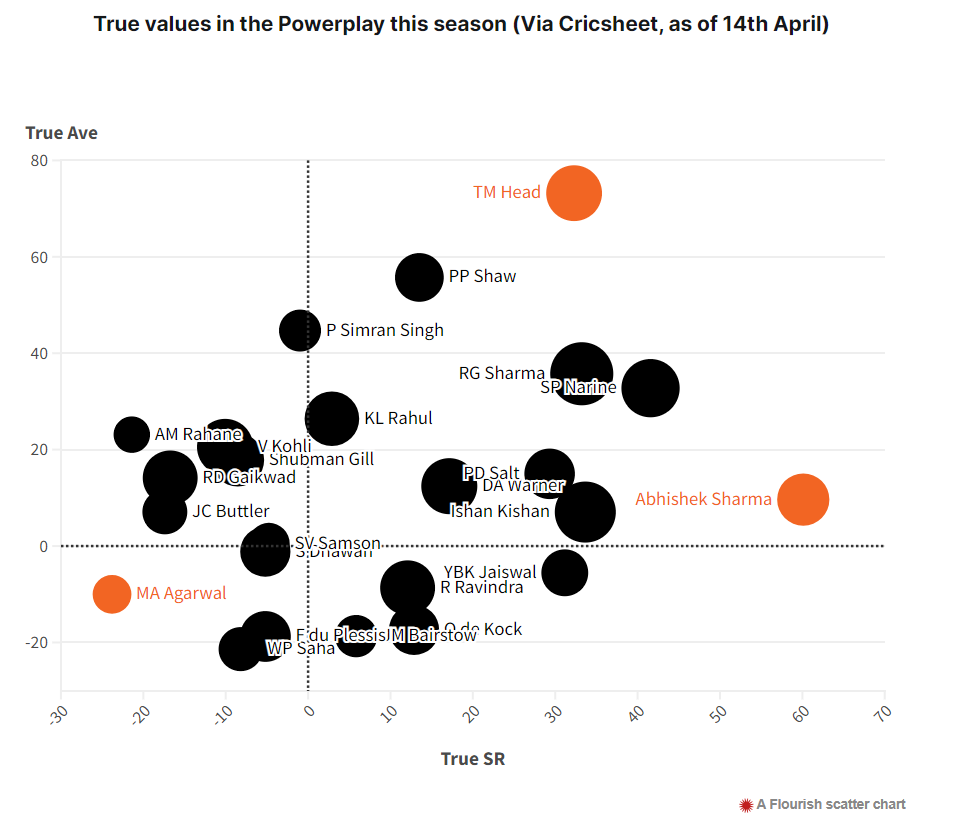
This is Head so far this year, regular scoring of runs up top, and also regular strike rate. This means that they could try Abhishek there too. Head is an anchor and power hitter in one.
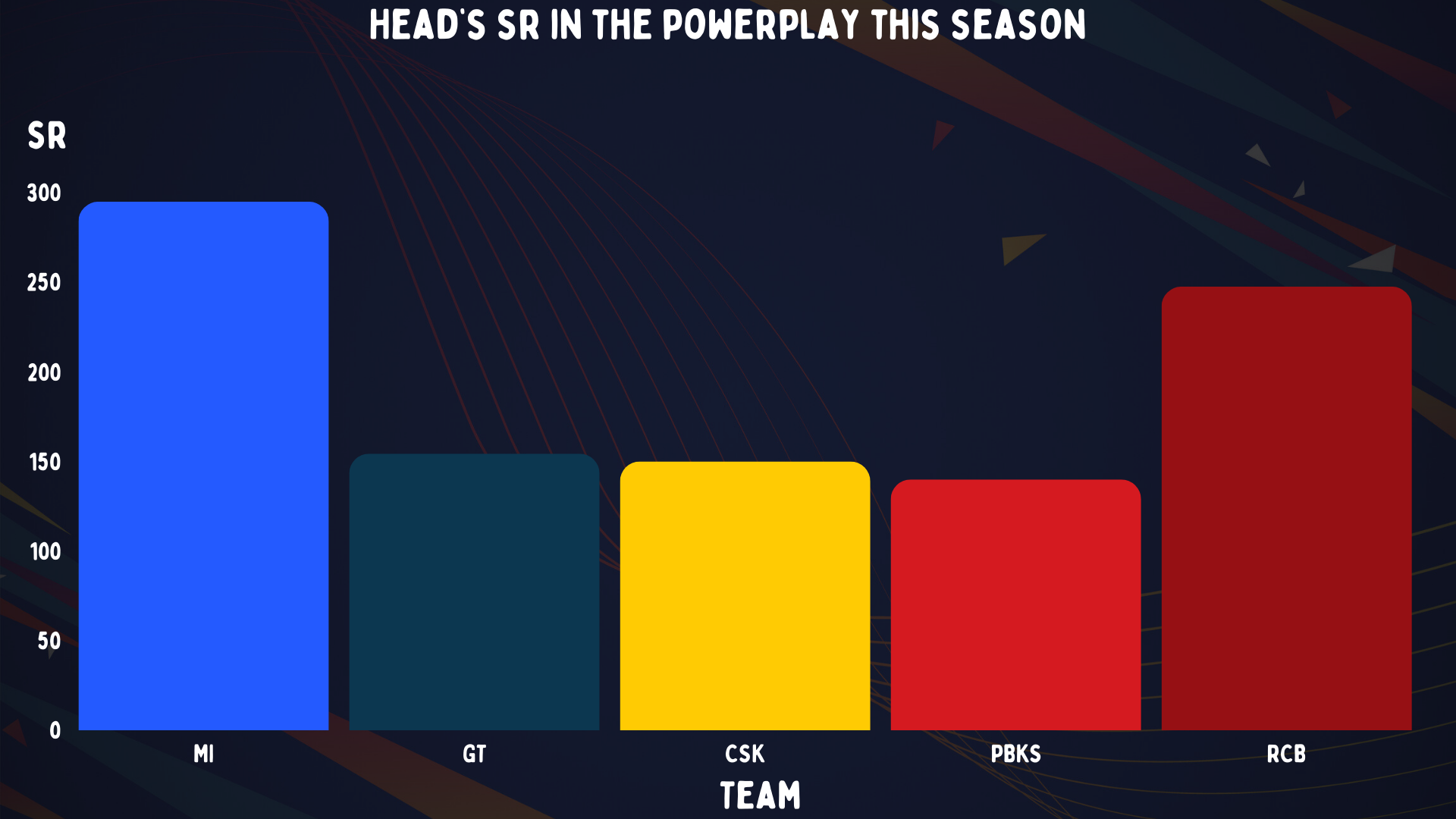
Agarwal opened the Mumbai match. Remember that? It was pretty special as well. But there was a big difference in the two games. Against Mumbai, the Sunrisers actually had a dip. I know it may not have felt like it, but sometimes what happens when you start so fast is that your batters begin to think, ‘Well we need to ensure we get a massive total, rather than aiming for the stars.’ This time against RCB, the only thing that slowed them was Aiden Markram’s early strike rotation.
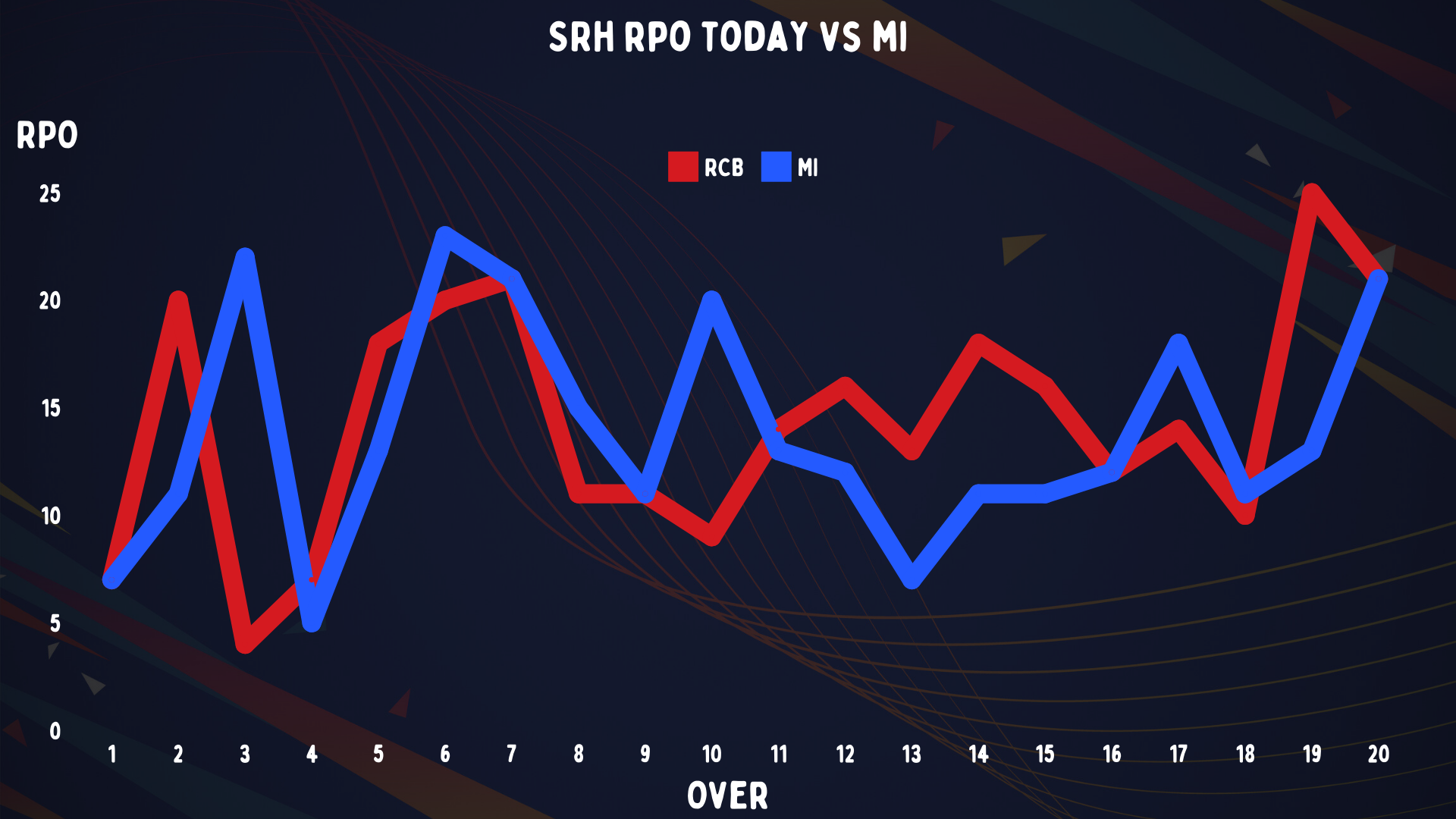
The odd thing about that, is that usually, Markram starts really quick. But here, he saw what was happening and decided to give Klaasen the strike, and really only got into six hitting mode at the end.
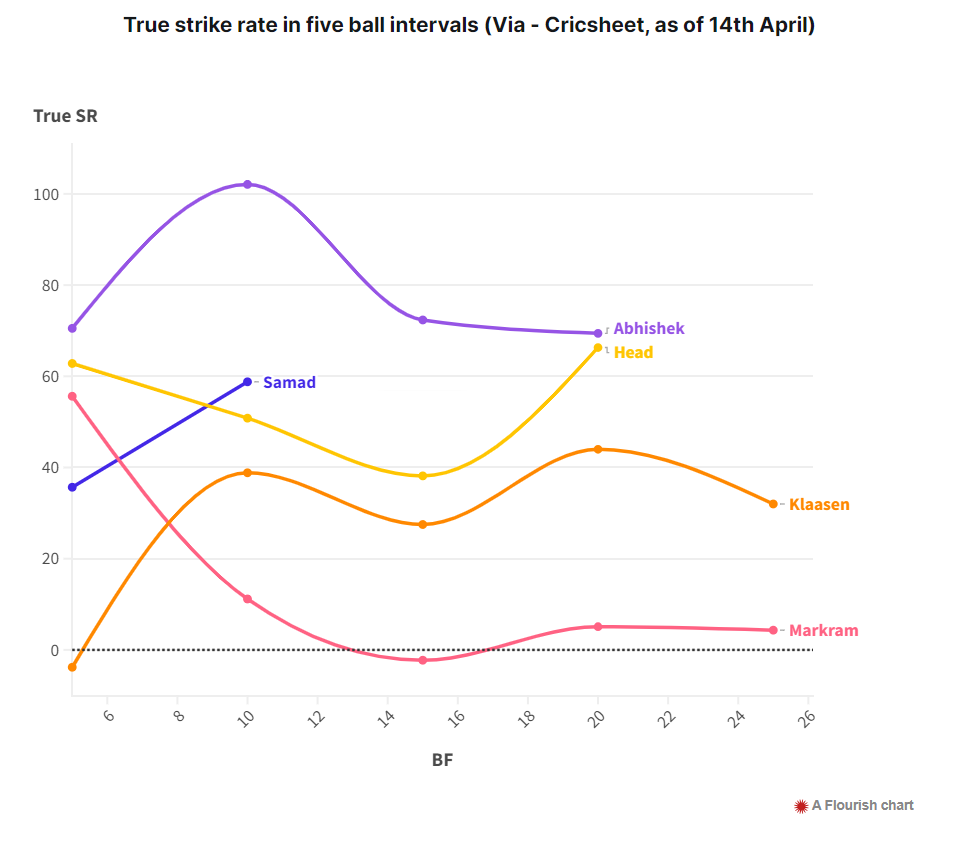
This is all the more funny because Markram held the record for the fastest century in a World Cup a few months back. And now, he was clipping the ball around like it was the middle overs of a List A match in Pretoria.
It was more annoying – well for those of us cheering on the potential 300 – because Markram could have helped get them there, and behind him was Abdul Samad who could do even more damage.
There was one other thing that slowed them down. There was not enough spin for Heinrich Klaasen to face. In the IPL, he has been at his best when the ball is turning. But there was only one over of it left by the time he got out there.
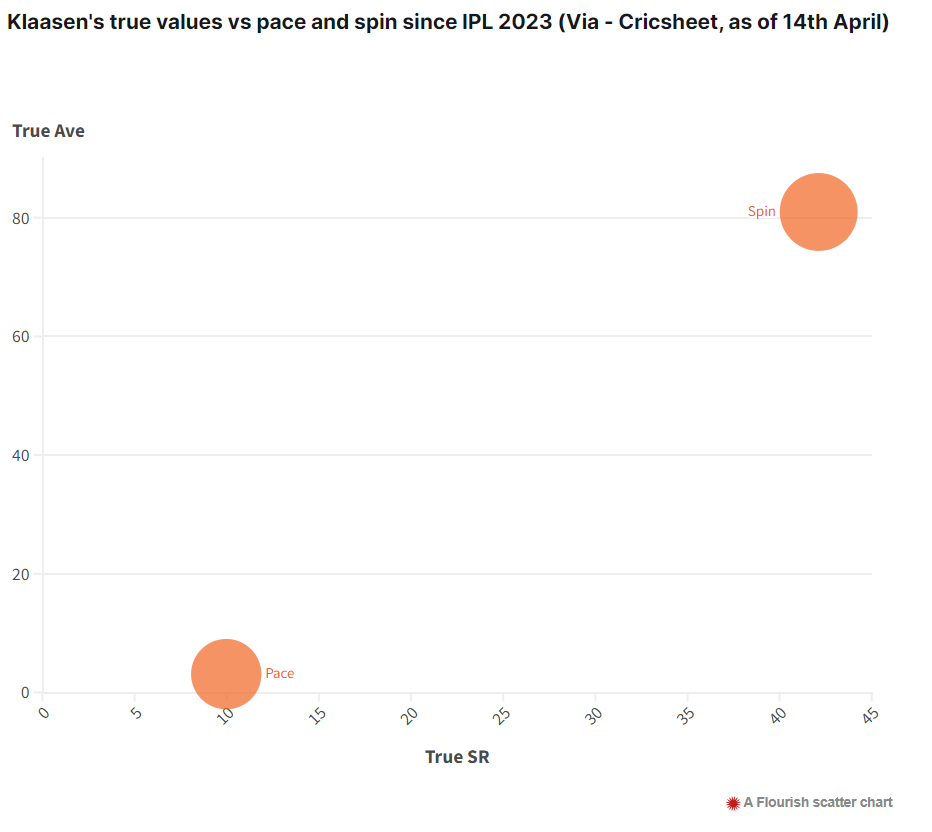
They made Mahipal Lomror bowl it, probably hoping that spinning the ball away from Klaasen would work better than Jack’s offies. Lomror’s last over in the IPL went for 13. He is no longer a bowler, and he was probably up against the best hitter of spin ever, in a match where par was 275.
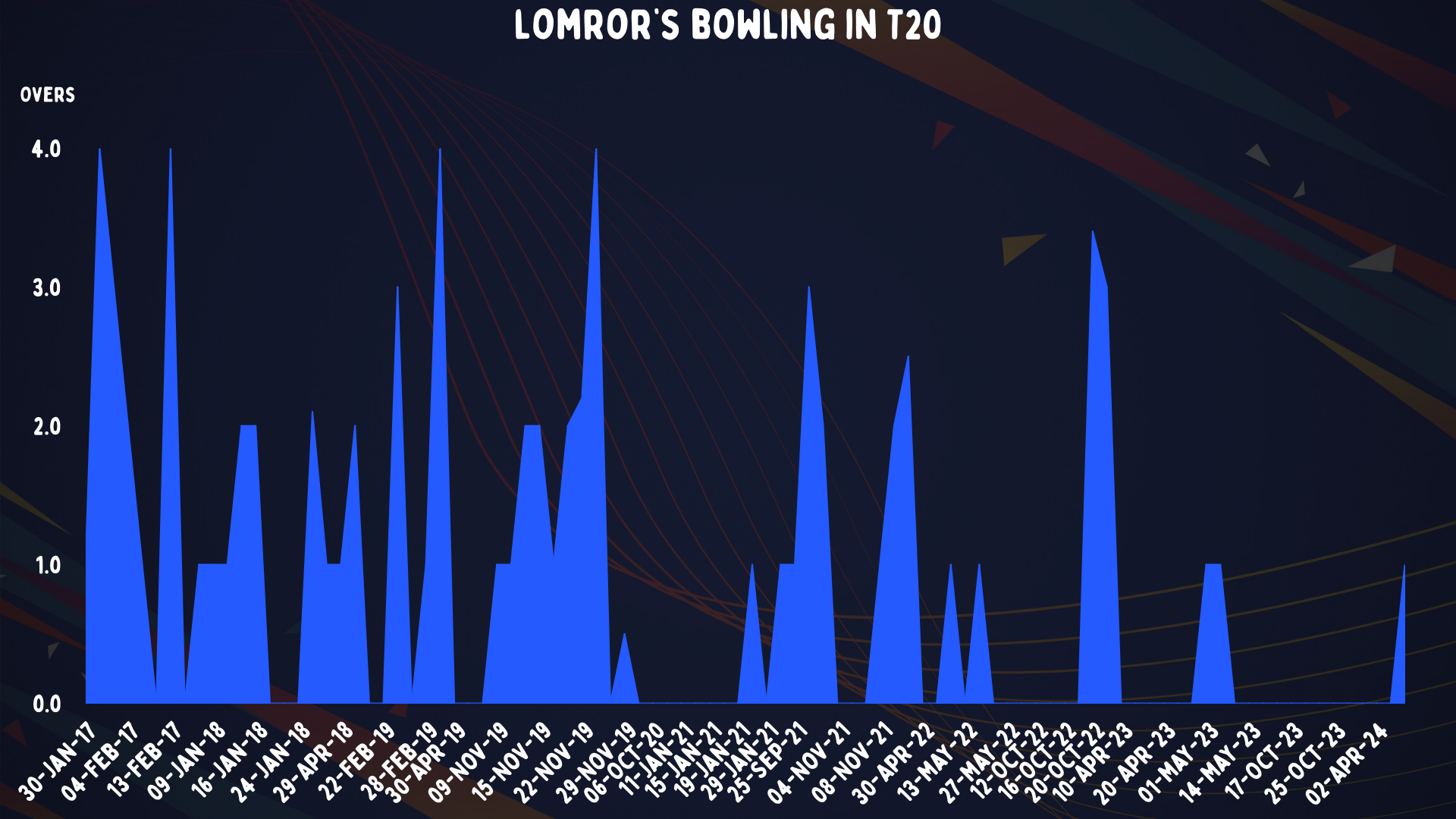
He started with wides, many, many wides. I honestly think that there is an alternate timeline where he is still bowling wides to Klaasen rather than get the ball near him. It’s worth noting too, that usually when a team is hitting every single ball you bowl for six, you deliver a lot more intentional wides. Which again could be the reason why SRH didn’t make 300.
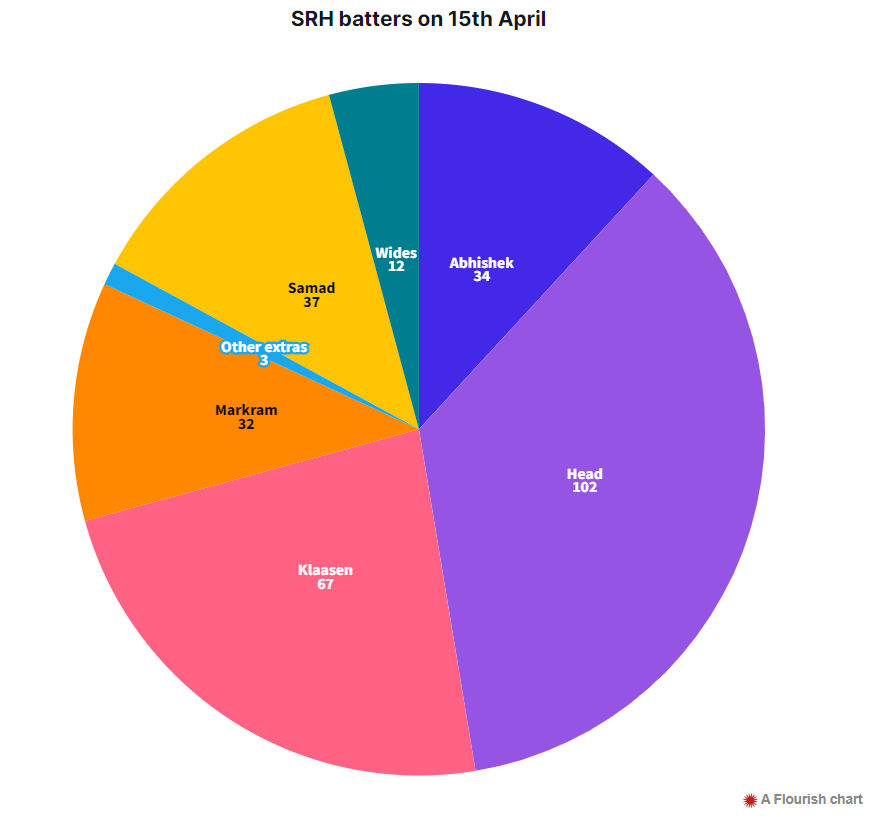
But Lomror did bowl balls that Klaasen could reach, and eventually moved around the wicket to steal a dot ball as well. This over went for 18, and I would say it was at least six runs under par.
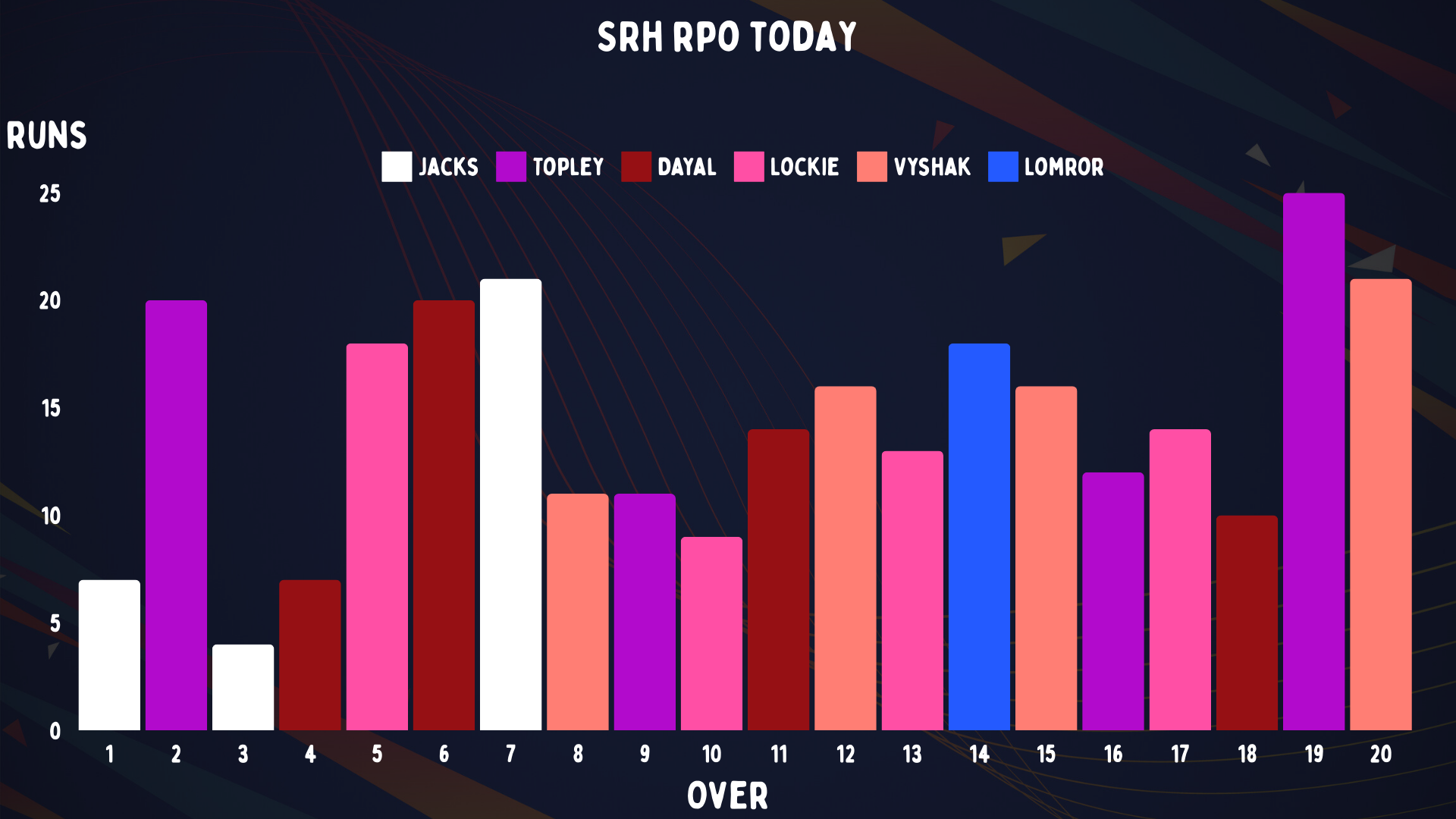
So with all these things together, you can see how to make 300 runs. Attack the part-time spinner at the start, get the bowlers to deliver more wides, hope there are more good match-ups later on, and that none of your players try and play sensibly.
The other thing you need to make 300 is a very good batting pitch. And we certainly had that. RCB lost by 25 runs, and we still had 549 runs scored in the match. Is it really too much to ask for one of these teams to make 300?
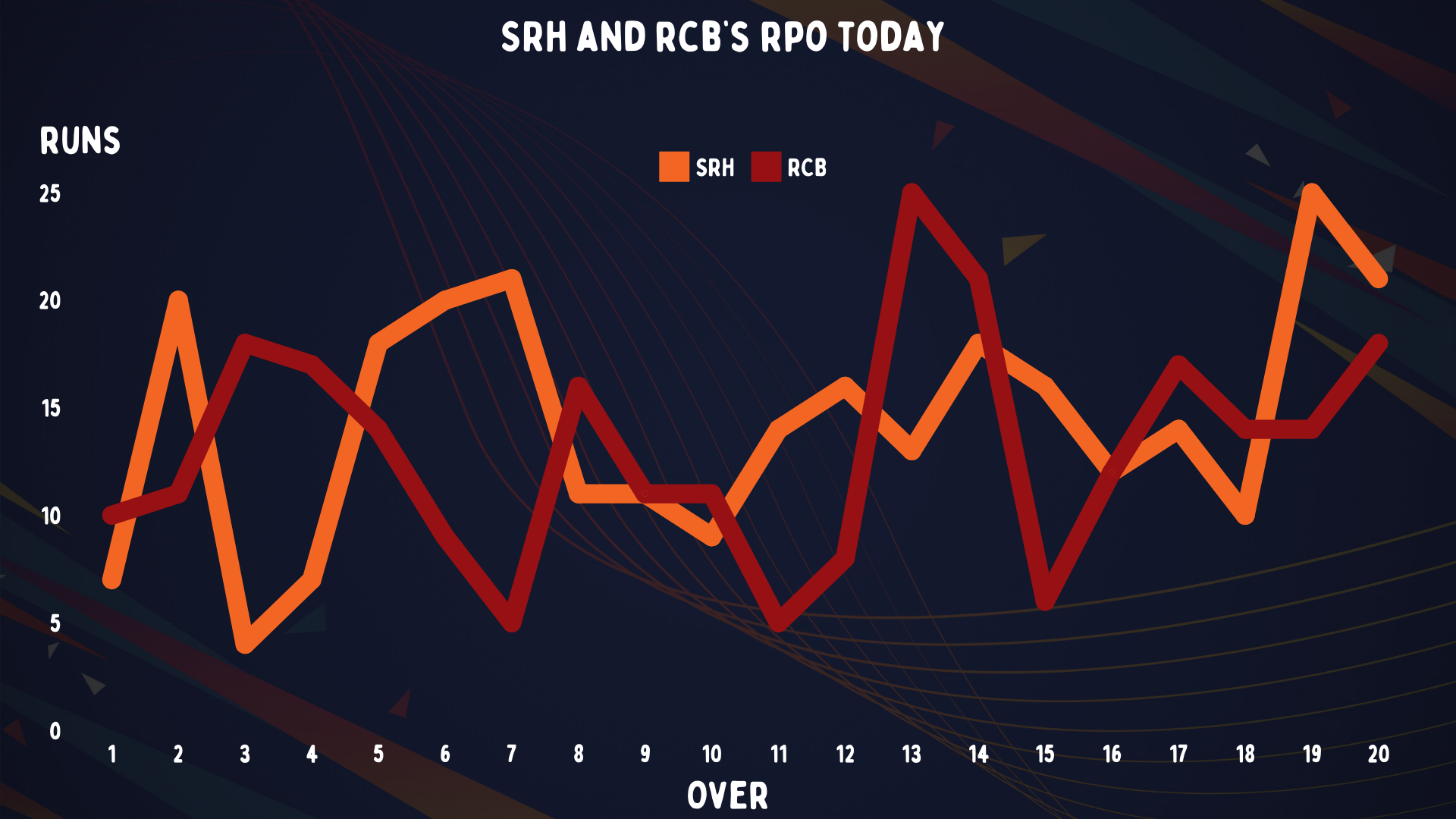
And then for another one to chase it?



